Introduction
In an era where cyber threats are increasingly sophisticated and pervasive, a structured and effective incident response plan is paramount for organizations to safeguard their digital assets and maintain operational continuity. This article delves into the meticulous phases of incident response, offering a comprehensive guide for organizations to prepare, detect, contain, investigate, eradicate, recover, and learn from cybersecurity incidents. Each phase is critical, from the foundational preparation and continuous monitoring in detection and analysis to the swift actions required for containment and eradication.
The importance of thorough post-incident reviews to refine and strengthen future response strategies cannot be overstated. Explore how adopting these best practices can enhance resilience, minimize potential damage, and ensure a robust security posture in the face of evolving cyber threats.
Phase 1: Preparation
Preparation is the foundation of a strong crisis management strategy. Organizations must create a committed crisis management team, clearly outlining roles and responsibilities to ensure prompt and effective action during a security event. Regular training sessions are essential to keep team members proficient in their duties and familiar with the latest procedures. It's essential to create and uphold a thorough plan for addressing occurrences, outlining the procedures for recognizing and managing events.
To ensure effectiveness, regularly evaluate the situation management strategy by breaking it down into its key elements—such as escalation, triage, and alternative communication channels. Rank these processes according to their criticality and the effort required to test them. This method assists in recognizing and tackling any deficiencies, ensuring the strategy is as efficient in execution as it is in theory.
Additionally, the event management plan must be examined and revised frequently to incorporate alterations in the organizational framework and changing threat environments. A proactive strategy that involves regular testing and updates can greatly improve an organization's capacity to manage situations effectively and reduce potential harm.
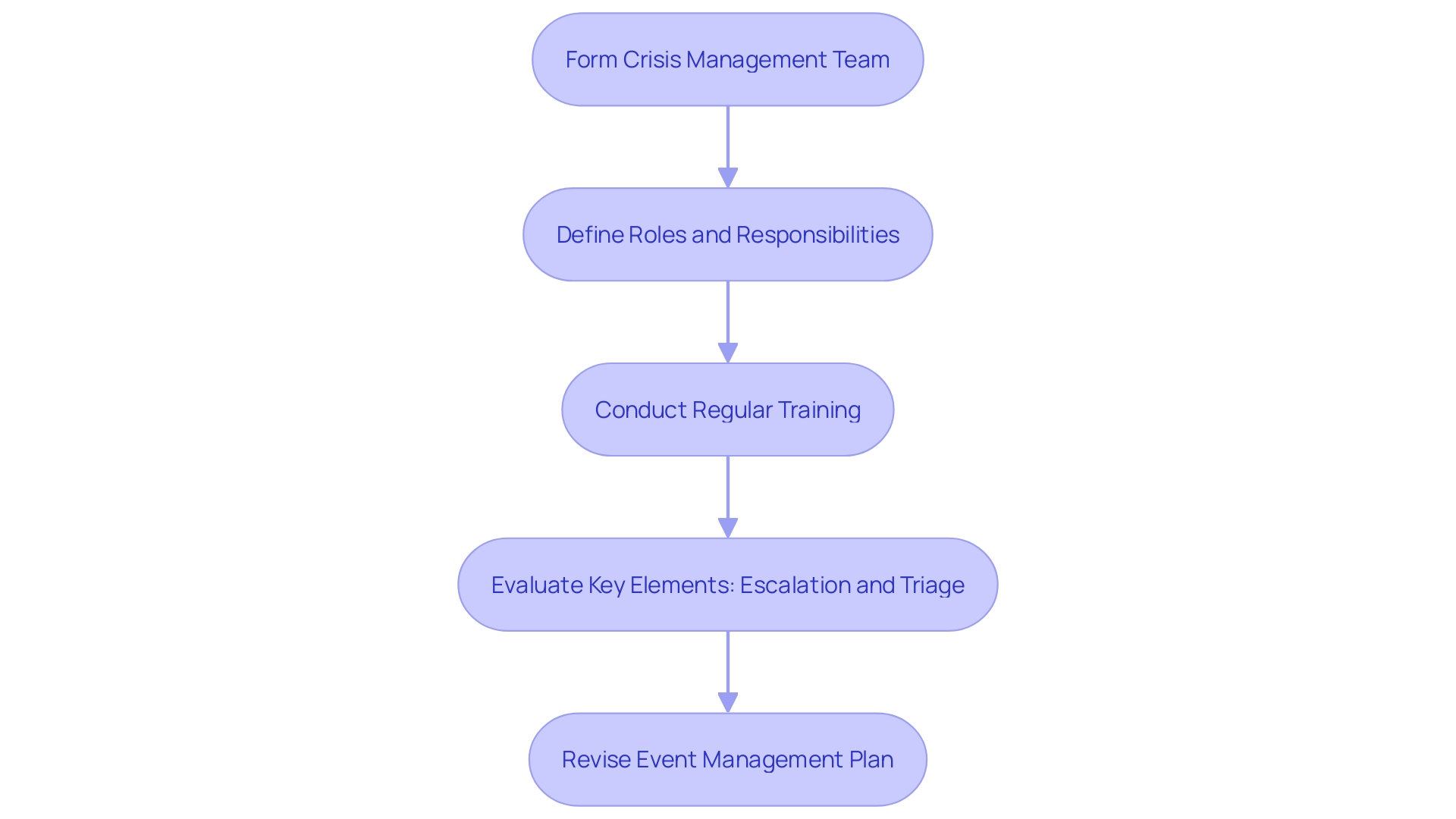
Phase 2: Detection and Analysis
'Detection and analysis are essential elements of a strong response strategy, necessitating ongoing observation of systems and networks for possible security breaches.'. Deploying Security Information and Event Management (SIEM) systems is essential for aggregating and analyzing logs from diverse sources, enhancing visibility and safeguarding critical data. SIEM platforms enable organizations to detect sophisticated threats by correlating and scrutinizing data from various endpoints.
Setting clear and precise standards for event classification is paramount. This involves defining thresholds for different severity levels to prioritize alerts efficiently. A uniform procedure for recording and examining events not only enables prompt and efficient actions but also assists in post-event evaluations and future preparedness. As highlighted in recent AI-driven guided response frameworks, integrating machine learning can augment traditional methods, providing more accurate and timely threat detection.
One notable case study involves a security operations center (SOC) utilizing advanced endpoint management tools to identify and mitigate unusual usage patterns of remote management tools. This proactive approach underscores the importance of continuous monitoring and the use of AI to support decision-making. Additionally, the FAIR Institute's framework for Quantitative Information Risk Management has become a standard for assessing and managing cybersecurity risks, emphasizing the need for standardized processes and best practices.
Integrating these strategies can greatly improve an organization's capacity to react to situations quickly, reducing possible harm and maintaining a robust security stance.
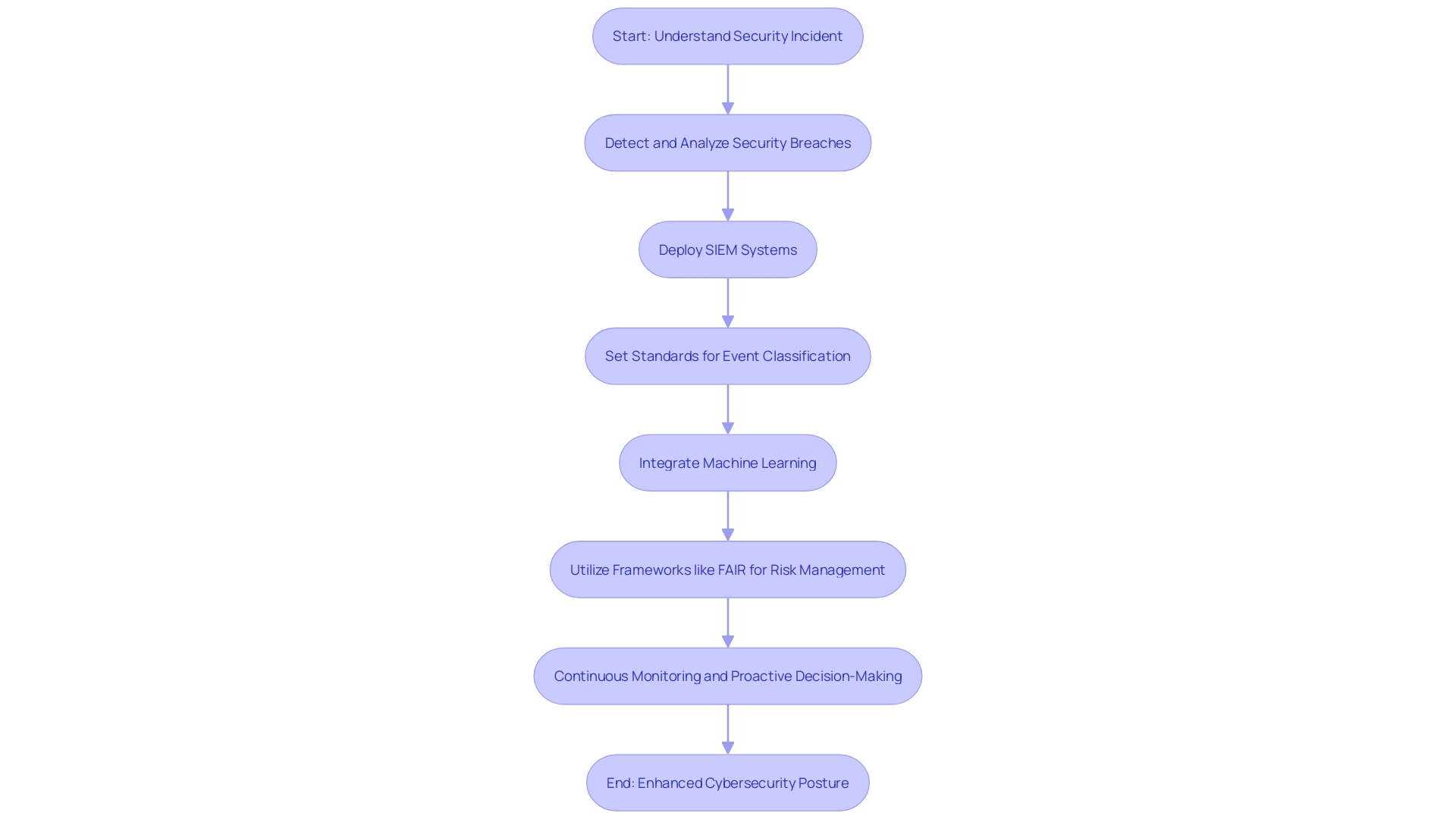
Phase 3: Containment and Mitigation
Effective containment and mitigation strategies are essential to minimizing the impact of cybersecurity events. Short-term containment tactics often involve isolating compromised systems to prevent further damage. For instance, a swift response can include disconnecting affected systems from the network, a method underscored by Fortinet's recent event where quick action helped mitigate potential harm. Long-term containment measures, on the other hand, are more comprehensive. These might include applying critical patches or updates to address vulnerabilities, as seen in the proactive approaches adopted by many organizations to bolster their security posture.
Furthermore, a thorough assessment of the event's scope is vital. This includes a business impact analysis and prioritizing mitigation efforts based on the potential for data loss or operational disruption. For instance, organizations must assess the maximum permissible downtime and set up clear communication pathways for employees, stakeholders, and media, ensuring a robust business continuity management (BCM) strategy.
A strong response plan also involves ongoing surveillance and routine assessments of these strategies to adjust to changing dangers. As emphasized by cybersecurity specialists, grasping the risk environment is essential for making informed choices that safeguard organizational integrity and ensure operational continuity.
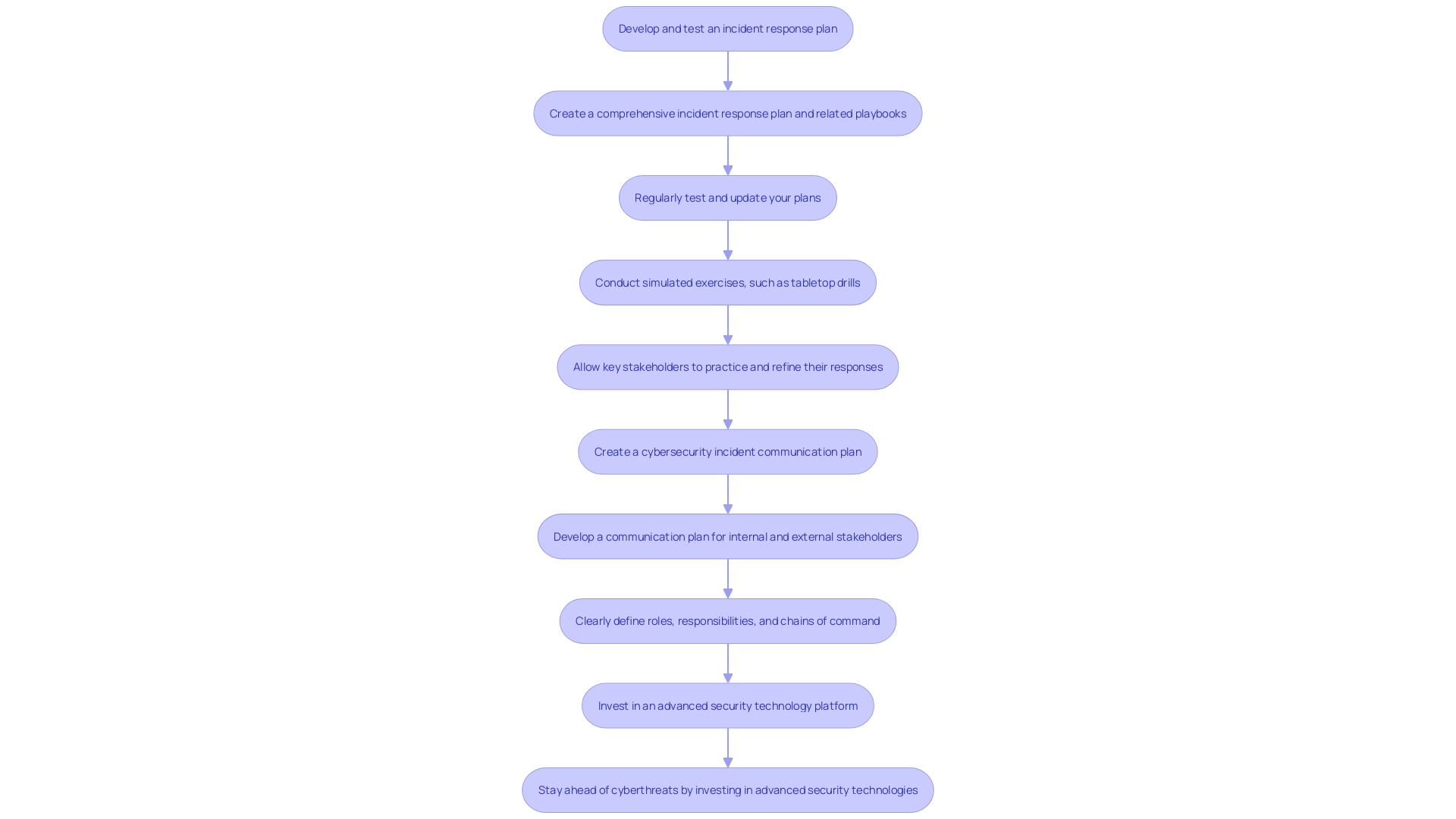
Phase 4: Investigation and Forensics
Investigation and forensics are essential for organizations to comprehend the root cause of a cybersecurity event. To ensure the integrity of digital evidence, it is essential to collect and preserve it meticulously. Leveraging forensic tools, investigators can analyze compromised systems and gain insights into the attack vectors used by adversaries. Digital evidence, as noted by experts like Granick, differs significantly from physical evidence due to its vast and personal nature. Often, this evidence is intertwined with personal information, making the preservation process complex and delicate.
Collaboration with law enforcement or legal teams is imperative, particularly in cases involving potential criminal activity. This partnership not only aids in the legal handling of evidence but also ensures compliance with regulatory requirements. As emphasized by OODA, a group of global specialists in risk and danger management, the organized approach in evidence preservation is vital. This approach includes phases of data collection, automation, and preservation techniques, ensuring the longevity and integrity of the archived information.
In cybersecurity, knowledge and meticulousness are your most valuable assets. While tools can aid in the investigation process, their efficacy depends on the expertise and understanding of the people using them. As highlighted by cybersecurity experts, the quest for understanding in this domain is continuous, and remaining informed about the newest strategies and resources is crucial for efficient crisis management.
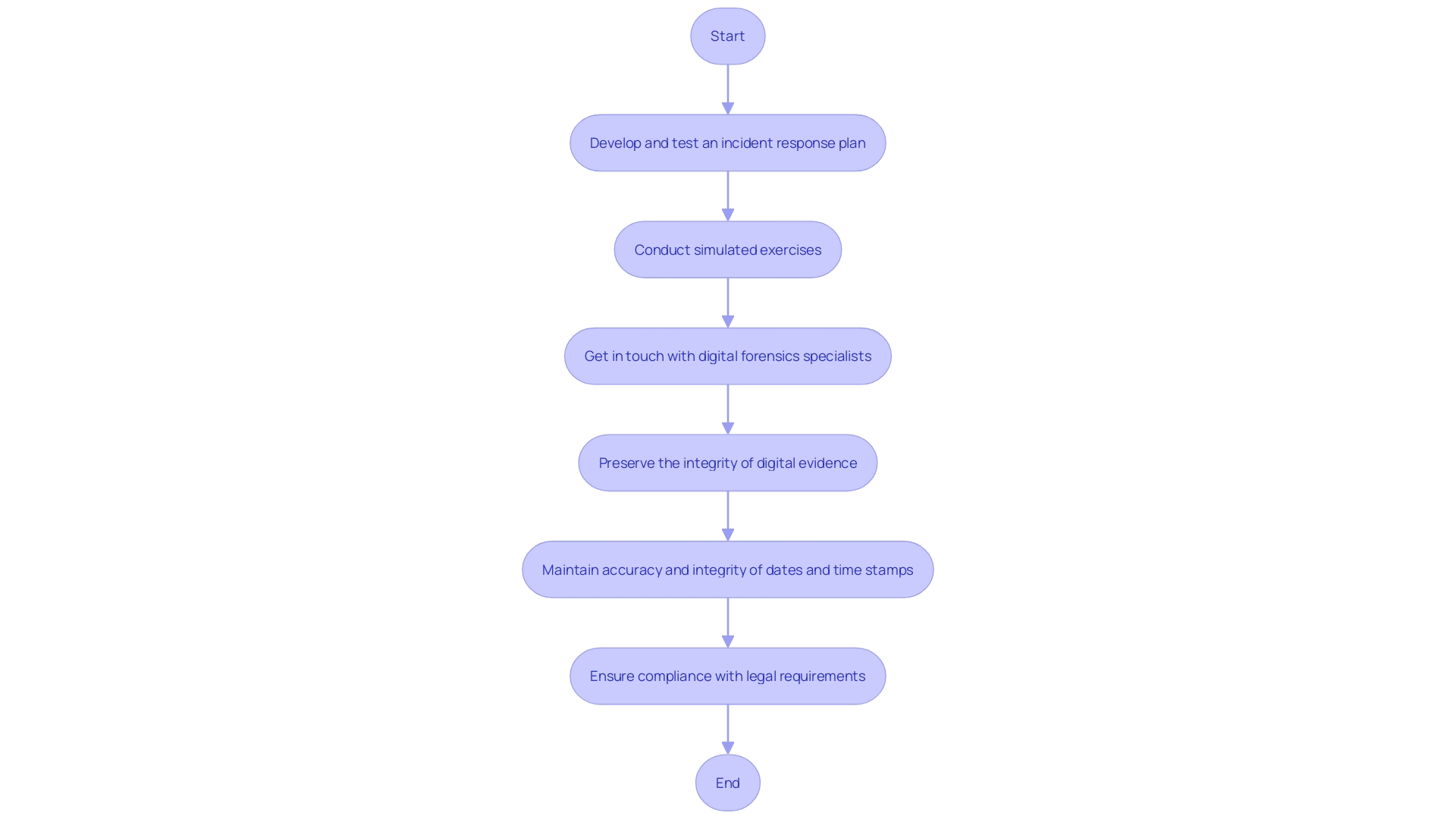
Phase 5: Eradication
Elimination is a vital stage in response activities, aimed at entirely removing the danger from your surroundings. This involves deleting malicious files, disabling compromised accounts, and patching vulnerabilities that were exploited during the incident. For instance, in one case, a Security Operations Center (SOC) successfully identified and eliminated a persistent danger by monitoring unusual usage of remote management tools and promptly disabling the malicious accounts involved. It's crucial to ensure all remnants of the danger are addressed to prevent recurrence. Documentation of the eradication process is vital for future reference and compliance. As a cybersecurity leader, a deep understanding of today's risk landscape, including tools like MITER ATT&CK, can aid in making informed decisions and maintaining a resilient security posture.
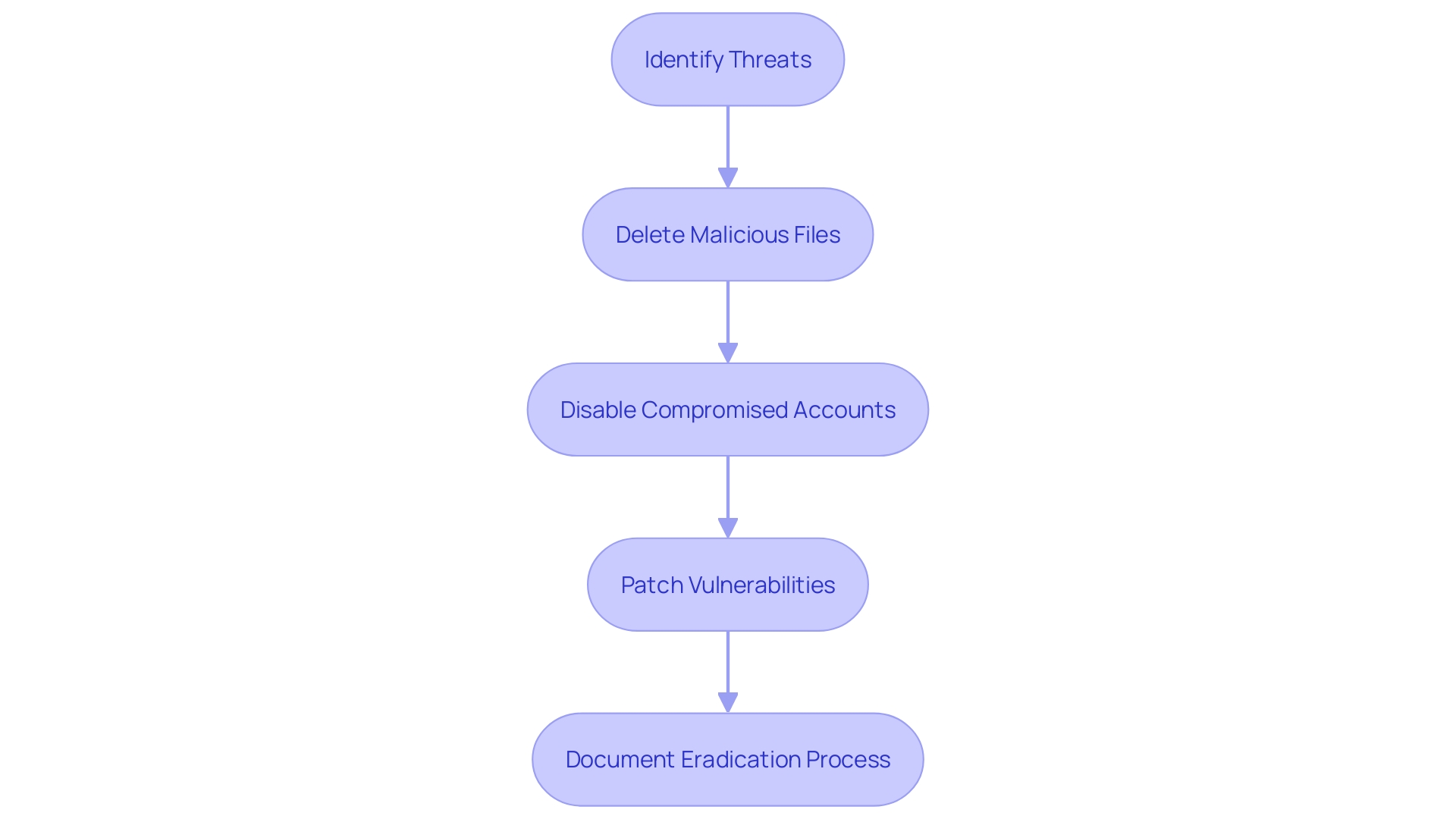
Phase 6: Recovery
Effective recovery involves a structured approach to return systems to full functionality. Start by developing a comprehensive strategy to safely restore impacted systems while ensuring all cybersecurity measures are in place to prevent further breaches. During this phase, close monitoring of systems is crucial to detect any lingering issues or additional threats promptly.
Communicating with stakeholders throughout the recovery process is essential. Provide regular updates on progress and anticipated timelines to rebuild trust and maintain transparency. Highlight the importance of this communication, as noted in the case of the Mid-Atlantic health insurance provider, where continual stakeholder engagement was pivotal in managing the aftermath of cyber incidents.
Additionally, consider the broader implications of the recovery process. A well-executed disaster recovery plan not only mitigates downtime but also safeguards the organization's reputation and legal standing. This is particularly important given the significant financial repercussions of data loss, as demonstrated by the $10 billion impact of the CrowdStrike outage in 2024. Ensuring that recovery procedures are robust and well-communicated can prevent such disruptions and maintain operational integrity.
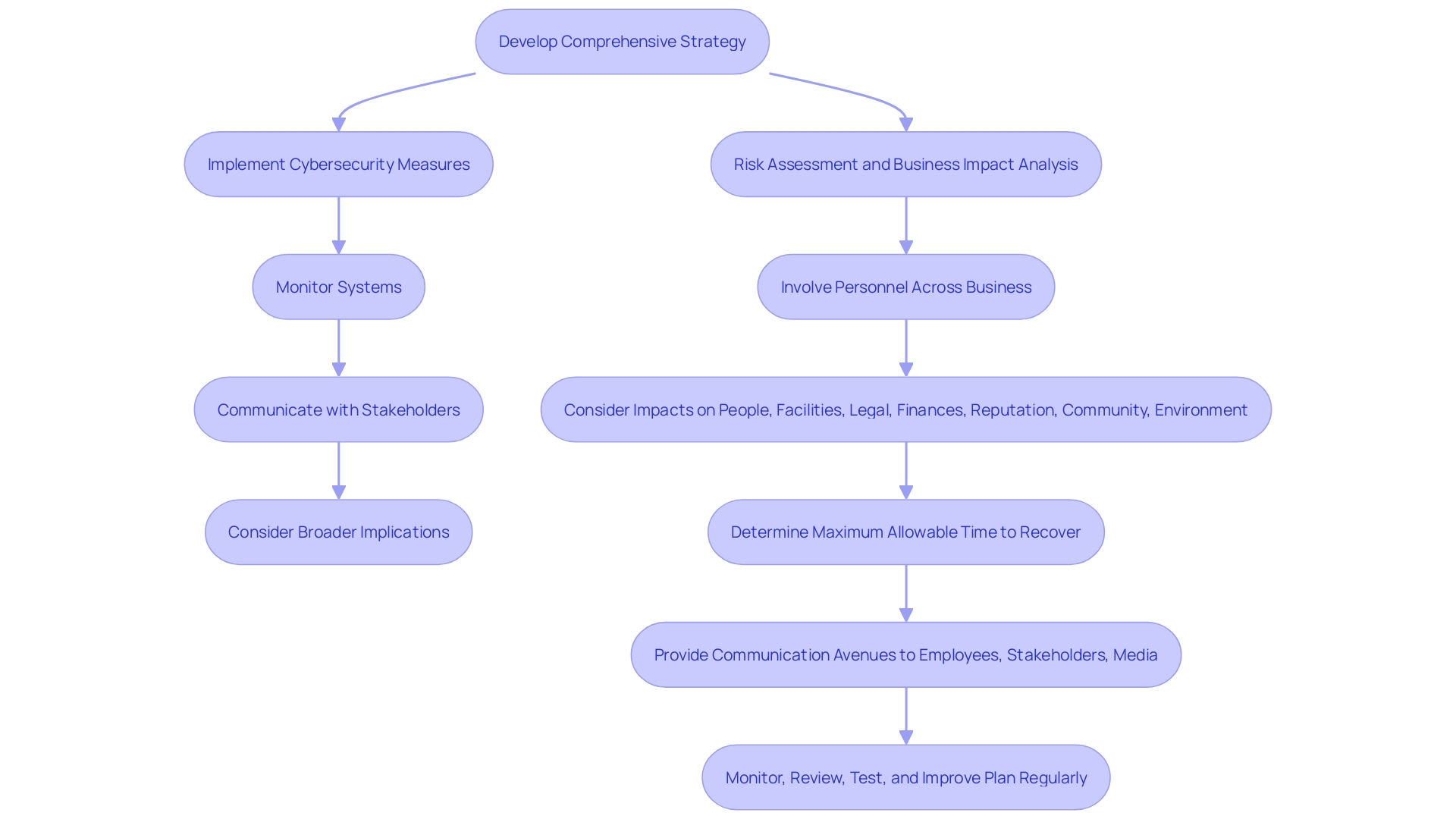
Phase 7: Post-Incident Activity and Lessons Learned
Post-incident activities are indispensable for refining future reaction strategies. Conducting a comprehensive review of the event is essential to pinpoint both successful elements and areas needing enhancement. This review should be structured and thorough, leveraging digital forensics techniques to extract and analyze data, which can reveal critical insights about how the breach occurred and its overall impact. For instance, understanding attacker entry points and movement within the network can significantly inform your security posture.
Once the review is complete, updating the incident response strategy based on these lessons is crucial. This strategy should be regularly tested, with each sub-process ranked by its criticality and effort required for testing. Regular testing helps identify and address any gaps, ensuring that the plan remains robust and effective in real-world scenarios.
Moreover, sharing these insights with all relevant stakeholders fosters a culture of continuous improvement. Engaging with partners and stakeholders not only enhances your organization's resilience but also contributes to a broader collective defense effort. For instance, collaboration with expert teams like OODA can provide advanced intelligence and bolster your crisis response capabilities. By embracing a culture that sees failure as a path to improvement, organizations can turn incidents into invaluable learning opportunities, thereby strengthening their overall cybersecurity posture.
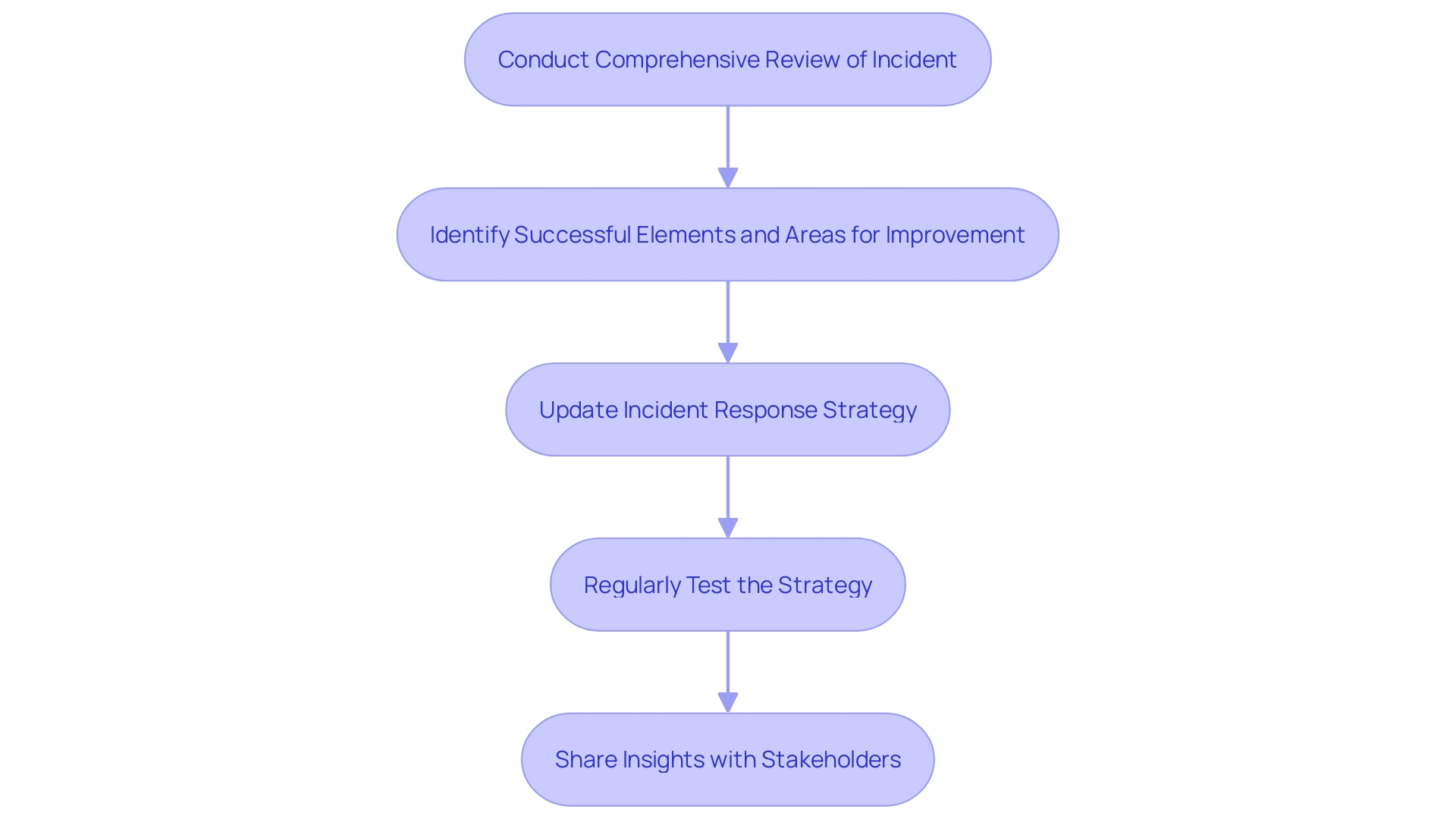
Conclusion
The phases of incident response outlined in this article emphasize the necessity of a structured approach to cybersecurity. Preparation is foundational, requiring a defined incident response team and regular testing of the response plan to ensure readiness against evolving threats.
Detection and analysis are crucial for early breach identification. Utilizing advanced tools like SIEM systems enhances threat monitoring and supports a resilient security posture.
Containment and mitigation strategies are essential for minimizing incident impact. Swift isolation of compromised systems and effective communication help maintain operational continuity.
Investigation and forensics provide insights into incidents, enabling organizations to understand root causes and improve defenses. Collaboration with legal and law enforcement ensures proper evidence handling.
The eradication phase focuses on completely removing threats and documenting actions taken for future reference. Recovery involves restoring systems while implementing robust security measures and maintaining clear communication with stakeholders.
Post-incident activities are vital for refining response strategies. Conducting thorough reviews and sharing lessons learned foster a culture of continuous improvement, enabling organizations to treat incidents as learning opportunities.
In summary, adopting a comprehensive incident response framework minimizes potential damage and strengthens an organization’s cybersecurity posture. By prioritizing preparation, detection, containment, investigation, eradication, recovery, and post-incident learning, organizations can effectively navigate the complexities of the digital landscape and safeguard their assets against evolving threats.




